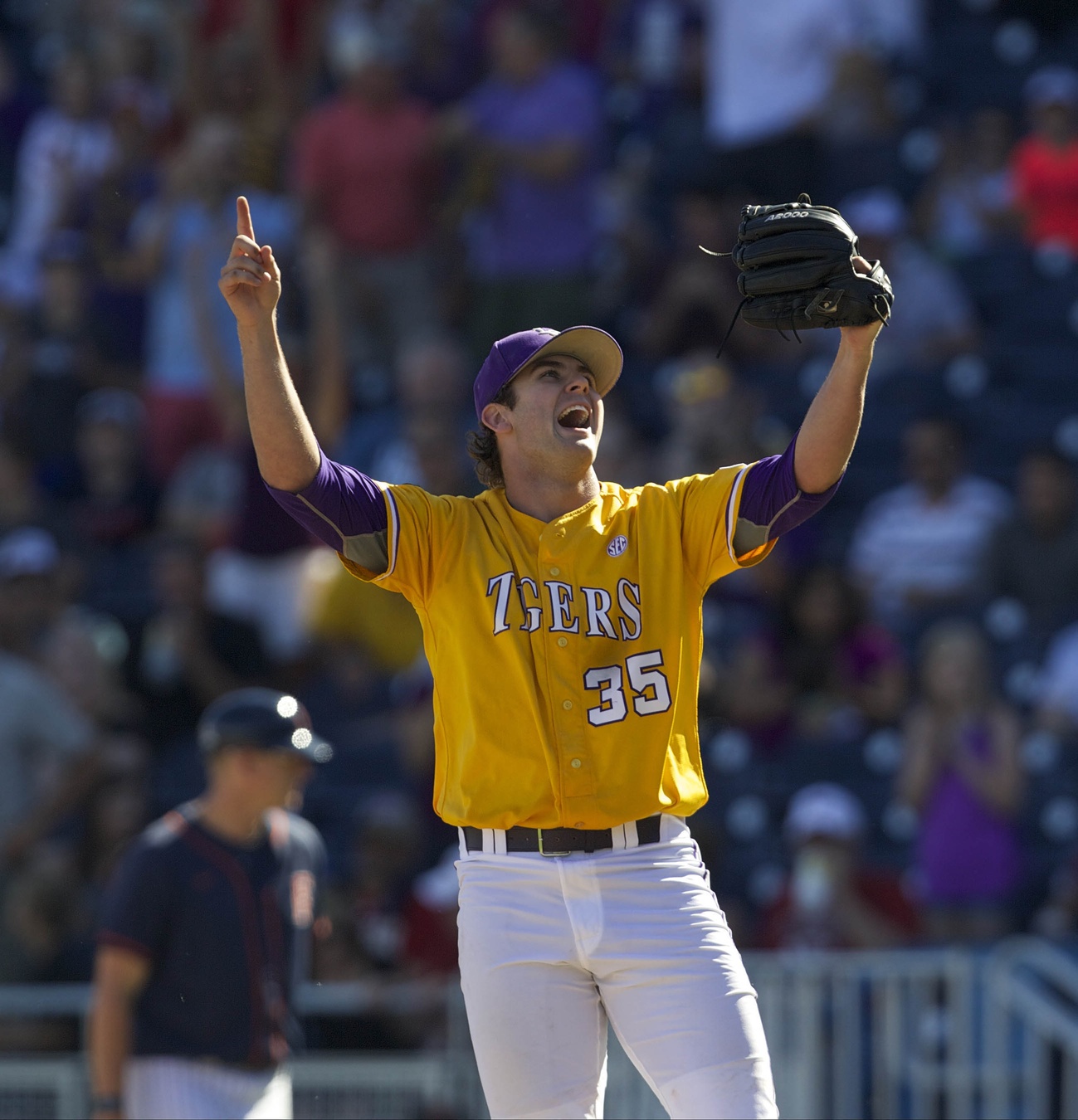Transparency has been an essential trait of Cubs management for the past five years. Director of Scouting Jason McLeod pronounced their strategy for this year’s draft last week when he said that the Cubs were going to target pitching throughout the draft. In addition, McLeod wanted his scouts to focus more on performance than upon physical traits and mechanics. Last year, the Cubs selected nine pitchers in the first 10 selections. This year, they went 8-of-11, including their first five picks. Over the course of three days, McLeod wound up selecting 27 arms to bring into the system.
Which Arms Might Have the Most Impact?
Brendon Little – At 97 mph from the left side, this type of arm has been nonexistent in the Cubs system. Power lefties don’t grow on trees. I don’t know if the Cubs plan on having him start or relieve. Either way, he is now a very valuable asset.
Alex Lange – He’s been a stud for three years at LSU. He has a power curve and a low to mid 90s fastball. However, I think his greatest asset is his competitiveness and desire to be the best. He could be a mid-rotation starter within a couple of years.
Cory Abbott - He really shot onto the scene in 2017 with the development of a slider based on the grip of Noah Syndergaard that he saw on YouTube. What most scouts reveled in is that he threw it in the upper 80s which made it hard to contrast with his low-to-mid 90s fastball. His stuff could play up better in the ‘pen.
Keegan Thompson – Before he had TJS, he threw in the mid-90s with maximum effort. Now, he’s down in the low 90s and is a better pitcher. His emphasis this year at Auburn was on pitchability and getting hitters out rather than trying to blow everyone away. With his experience in the SEC, he should begin next year in Myrtle Beach. I doubt he sees much action this year.
Brian Glowicki - His idol is Jon Lester, and the closer from Minnesota has a track record of success. This year he had a 2.20 ERA in 32.2 innings pitched. He struck out 39 and has big game experience in the closer role.
Which Arms Could Be Seen as Gambles?
Andrew Karp - A draft-eligible sophomore, he is going to be tough to sign. Still, he is seen as an ascending player who improved throughout the year as a part-time starter for Florida State.
Jeremy Estrada – He’s got big time potential as a high school starting pitcher, but I don’t know if the Cubs can get him out of this commitment to UCLA, even as a sixth round pick.
Ricky Tyler Thomas – He had an outstanding 2016 for Fresno State, and he pitched well for USA baseball. This year, he got off to a great start before wearing down quickly. I think his stuff plays better out of the bullpen, and he already has a plus-plus changeup.
Erich Uelmen – He is a big bodied young man at 6’3″. Everything that comes out of his hand sinks. He has four pitches with he can throw for strikes including a slider and a sinker to go along with his 2 seam fastball and an iffy curve. He might actually be the safest bet.
What About Position Players?
The Cubs don’t have a high need for position players. Considering who they have at the major-league level, it could be a while before there are several job openings. The Cubs first position player they selected could be seen as a gamble. Nelson Velasquez has a lot of upside and a powerful body with which to do it. He has 70 speed, developing power, and was the third-ranked prospect out of Puerto Rico this year. He still needs game experience, but he is seen as a developfive-tooltool player.
3B Austin Filiere (eighth round pick) and OF Chris Carrier (ninth round) both have a lot of potential for power. Carrier comes from Memphis while Filiere comes from MIT—neither of which are powerhouse college programs. Carrier is a sculpted physical specimen at 6’2” and 225 pounds, while Filiere’s experience in the wooden bat Cape Cod League might give him an advantage as they begin their pro careers, most likely in Eugene.
The Cubs took a couple of toolsy young players on Day 3. SS Luis Vazquez from Puerto is a 6’3” shortstop who made a nice recuitment video that shows off his athleticism.
27th round pick Darius Vines from Oxnard College pitched, played short, and was also a star QB. The Cubs selected Vines as a pitcher, and it will be interesting to see if the Cubs can ink him. He is quite the “toolsy” athlete.
How Many Will Sign?
With $7 million to spend, the Cubs are likely to sign close to 25 picks. Once they sign, the draft can be analyzed a bit better. Once we hit the signing deadline in mid-July, we’ll have more knowledge.
Last year they only had $4 million and were able to sign 26. Then again, the Cubs did not pick until the third round. This year, the Cubs selected several Top-200 high school prospects late in the draft as backups in case some of the picks in the top 10 do not sign. Bryce Bonnin (74), Hunter Ross (151), and Ben Ramirez (191) will more than likely go to college. However, you never know about these things.
You can find a complete list of the Cubs selections here.
Lead photo courtesy Bruce Thorson—USA Today Sports
